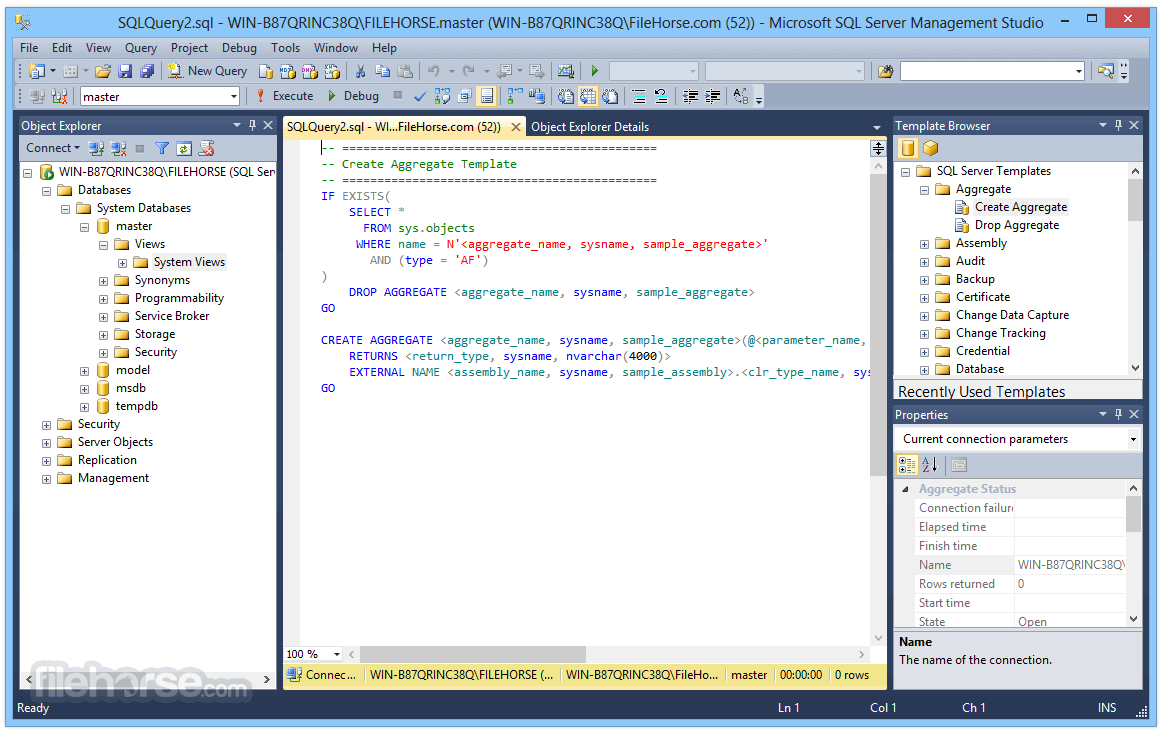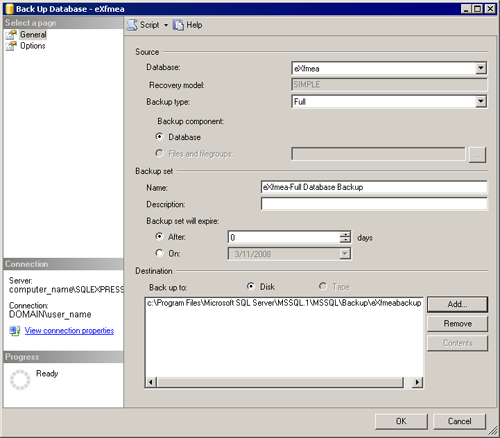

- #How to take auto backup in sql server 2012 express edition how to
- #How to take auto backup in sql server 2012 express edition software

Here I will choose the former as an example.Ģ. They are essentially the same, but the wizard will lead you through the whole operation. Expand Management menu under an instance, then right-click Maintenance Plans to create New Maintenance Plan, or open Maintenance Plan Wizard.

You can also use it for regular backup.ġ. Auto backup SQL database via Maintenance PlanĪ maintenance plan creates a workflow of the tasks to maintain you database.
#How to take auto backup in sql server 2012 express edition software
Schedule SQL database backup with auto backup software Automate SQL Server (Express) backup with Task Scheduler Create scheduled job to backup database with SQL Server Agent Auto backup SQL database via Maintenance Plan Thus you can easily auto backup databases or instances with simple clicks, whether it’s Express edition or not. If you find these methods cumbersome, you could also use SQL auto backup software as alternative. Instead, you need to create a batch file with command line, and use Task Scheduler to automate it. However, these tools are not available in SSMS if you are running Express editions of SQL Server. They function in a similar way, but if you don't want to use any command or script at all, you can choose the former. And there is more than one solution.įor ordinary SQL users, the most accessible way is to use the Maintenance Plan or SQL Server Agent in SSMS (SQL Server Management Studio).
#How to take auto backup in sql server 2012 express edition how to
Therefore, you may wonder how to auto back up SQL Server databases. It's may not a big deal to backup several SQL Server databases every now and then, but if the number of databases is large, or you need to backup frequently for data consistency, setting it up manually every time would be laborious and time-consuming. Have a question about Backup to URL not covered in this article or in documentation? Please post a comment.How do I auto backup SQL Server database? Azure Storage Explorer can be used to create container-level SAS tokens. account-level SAS tokenĭo this to follow the principle of least privilege. This is required for larger databases to avoid the ~195 GB per blob limit, and achieves better backup compression ratio. If using block blobs, use MAXTRANSFERSIZE = 4194304 and BLOCKSIZE = 65536 This improves backup/restore throughput, and is required to back up larger databases. If using block blobs, stripe the backup over multiple blobs Make sure to apply patches if using TDE with backup compression. Premium Storage is not supported in Backup to URL.Ĭompression improves backup/restore throughput and reduces backup size. insufficient permissions (Read/Write/Delete/List permissions are required for both backup and restore).The most common issue is including the leading ‘?’ in the token string. Syntax: BACKUP/RESTORE … TO/FROM URL = '…' įurther details about Backup to URL are available in documentation.īased on our work with customers using Backup to URL, we can also mention several recommendations: Syntax: BACKUP/RESTORE … TO/FROM URL = '…' WITH CREDENTIAL = '.' Maximum backup size: ~12 TB (with 64 stripes) Target throughput: (60 MB/s * number of blobs) Up to 64 blobs (stripes), up to ~195 GB each The table below describes these differences as a quick summary reference, to help customers choose the right type of Backup to URL for their scenario. As customers migrate their SQL Server workloads to Azure IaaS VMs or to Managed Instance, Backup to URL is becoming a very common (and in the case of Managed Instance, the only) way to back up databases.Īt the same time, customers are sometimes confused by the differences between the two types of Backup to URL that are available (page blobs and block blobs). In SQL Server 2016, Backup to URL was significantly improved, and added support for block blobs in addition to page blobs supported earlier. With this destination, SQL Server backs up a database to an Azure Blob Storage container and blob specified in the URL. In SQL Server 2012, a new destination named URL was added. Historically, SQL Server supported two backup destinations, disk and tape.


 0 kommentar(er)
0 kommentar(er)
